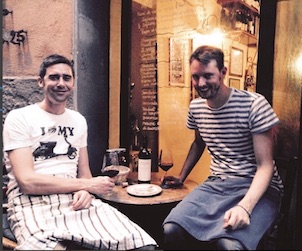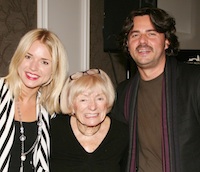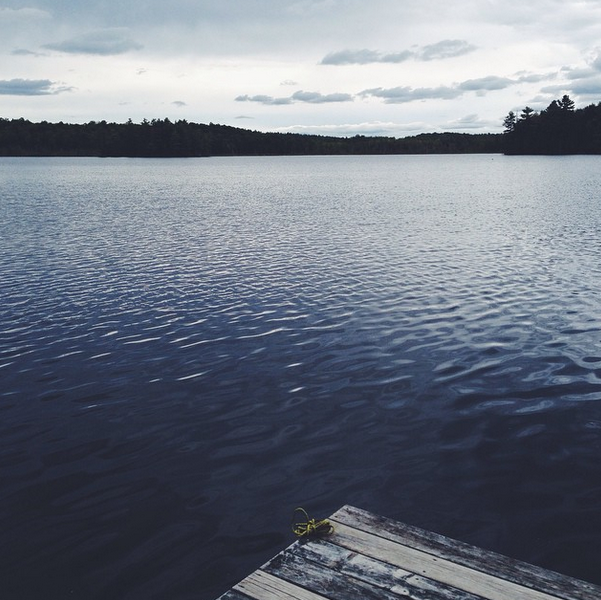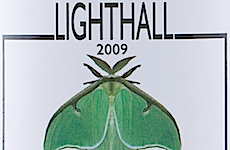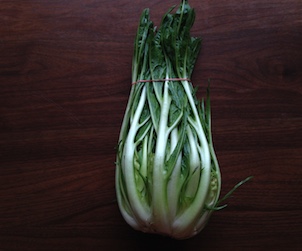Malcolm Jolley gets back to Umbria for its glorious food and wine.
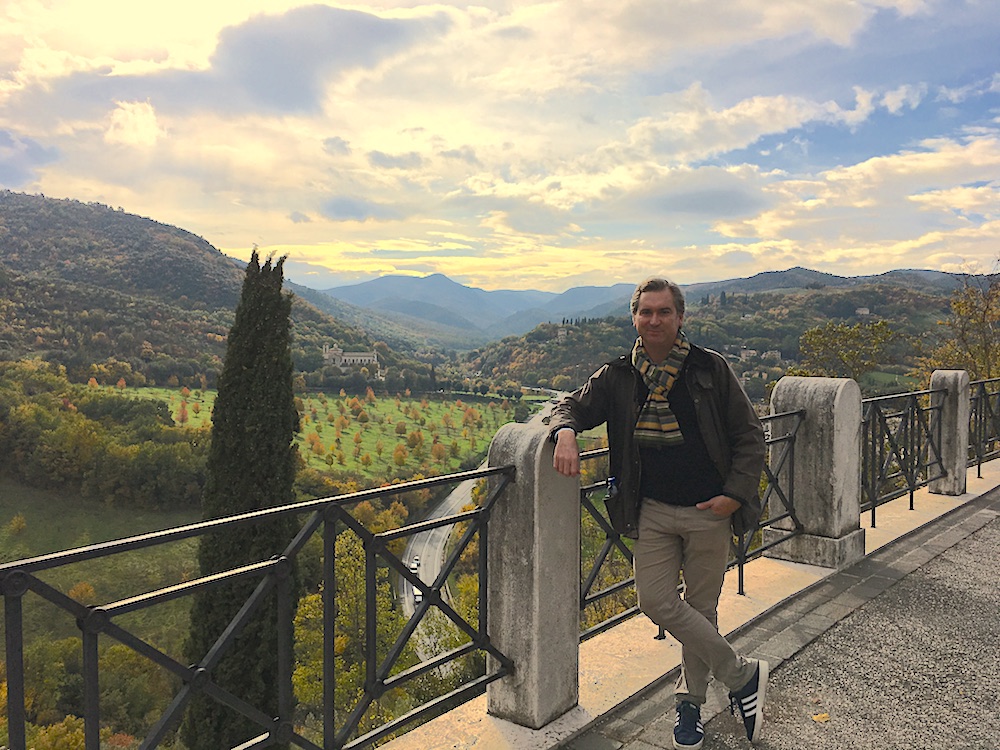
The author contemplates lunch downhill on the Via Flaminia in Spoleto, Umbria. Photo: Apple Newton-Smith.
My latest trip to Umbria started in Rome; literally and figuratively. My wife Apple and I took our physical bodies to Perugia by locomotivating them on a train from Termini station, but our metaphysical journey to the sylvan hills of Italy’s only landlocked administrative region began on the first day we arrived in the Republic’s capital. Jet lagged and groggy from an overnight flight, we had dropped our bags off at our hotel, near the Piazza del Popolo, and crossed the Tiber into the Rione of Prati, on the north side of The Vatican.
 We were on our way to the wine bar and restaurant Sorpasso in search of a restorative lunch. That we certainly found (more on it to come), but before ordered our food, I impulsively ordered us a bottle of white wine, along with our carafe of acqua frizzante. From the carta dei vini I spotted a wine from Umbria (local enough, I reasoned) and without looking at the producer saw it was made with Trebbiano Spoletino, a grape that both GFR’s Jamie Drummond and I are always on the lookout for. When it was presented to us at Sorpasso’s bar, I blinked in recognition. The producer was Bellafonte, represented by GFR’s ‘Good Food Fighter’ Woodman Wines & Spirits. This was a good, maybe great, omen. But more importantly, it was really delicious wine: a deep gold coloured wine that was equally profound in fruit and flavour. This wine is called Arnèto, which means, according to Bellafonte, ‘rebirth’. The term is meant to refer to the renaissance of the Trebbiano Spoletino grape, which was nearly extinct in Umbria. Bellafonte is certainly (and, again, deliciously) part of its welcomed regeneration, but the term, Arnèto, also seemed quite apt to the rejuvenating effect it had on our tired bags of bones. The wine woke us up and got us excited for our trip-within-a-trip to Central Italy: within our seven days in and out of Rome, we would ‘escape’ for two nights in Perugia, with a stopover in Spoleto on our way “home” to Rome. And, as it would turn out, this would only be one of many bottles of Bellafonte’s Arnèto (2014), that would guide us through our culinary journey.
We were on our way to the wine bar and restaurant Sorpasso in search of a restorative lunch. That we certainly found (more on it to come), but before ordered our food, I impulsively ordered us a bottle of white wine, along with our carafe of acqua frizzante. From the carta dei vini I spotted a wine from Umbria (local enough, I reasoned) and without looking at the producer saw it was made with Trebbiano Spoletino, a grape that both GFR’s Jamie Drummond and I are always on the lookout for. When it was presented to us at Sorpasso’s bar, I blinked in recognition. The producer was Bellafonte, represented by GFR’s ‘Good Food Fighter’ Woodman Wines & Spirits. This was a good, maybe great, omen. But more importantly, it was really delicious wine: a deep gold coloured wine that was equally profound in fruit and flavour. This wine is called Arnèto, which means, according to Bellafonte, ‘rebirth’. The term is meant to refer to the renaissance of the Trebbiano Spoletino grape, which was nearly extinct in Umbria. Bellafonte is certainly (and, again, deliciously) part of its welcomed regeneration, but the term, Arnèto, also seemed quite apt to the rejuvenating effect it had on our tired bags of bones. The wine woke us up and got us excited for our trip-within-a-trip to Central Italy: within our seven days in and out of Rome, we would ‘escape’ for two nights in Perugia, with a stopover in Spoleto on our way “home” to Rome. And, as it would turn out, this would only be one of many bottles of Bellafonte’s Arnèto (2014), that would guide us through our culinary journey.
Here’s what happened gastronomically for two dinners and lunches…
La Fame Vineria e Cucina – Via della Viola 54, Perugia
 La Fame means hunger in Italian and this funky, smallish restaurant on a tiny, winding medieval cobblestone street that was recommended to us by our hotel concierge when the place I had in mind was closed to the public for a private event. (I was still learning the ropes on How To Eat Out In Italy, and foolishly thought we wouldn’t need a booking on Tuesday night in November.) Perugia is not a big city (Google says its population was 165,849), but it has a bunch of things going for it: stunning views as it’s a true city on a hill (or technically two hills), it’s the seat of the regional government of Umbria, and it’s a university town. (Perugia was the site of the notorious murder case involving the American exchange student Amanda Knox.) This gives the charming, utterly walkable town, a cosmopolitan sheen. La Fame fit into Perugia’s casual cool ethos: run by young folks who looked like they came for school and maybe didn’t leave, it offered a charmingly forward menu, that relied on local ingredients, or those from neighbouring regions. It also had an interesting wine list and very helpful sommelier who steered us to a bottle Trebbiano Spoletino that had had considerable skin contact. That orange wine was delicious, and showed great fruit, which they don’t always do if they’re overly funky, and it carried us through three delicious courses. The winning dish belonged to my wife. It was so simple but so good: a local spaghetti like pasta in a a very, very finely chopped parsley and pecorino sauce, with just enough garlic and chilli to elevate it onto something truly memorable.
La Fame means hunger in Italian and this funky, smallish restaurant on a tiny, winding medieval cobblestone street that was recommended to us by our hotel concierge when the place I had in mind was closed to the public for a private event. (I was still learning the ropes on How To Eat Out In Italy, and foolishly thought we wouldn’t need a booking on Tuesday night in November.) Perugia is not a big city (Google says its population was 165,849), but it has a bunch of things going for it: stunning views as it’s a true city on a hill (or technically two hills), it’s the seat of the regional government of Umbria, and it’s a university town. (Perugia was the site of the notorious murder case involving the American exchange student Amanda Knox.) This gives the charming, utterly walkable town, a cosmopolitan sheen. La Fame fit into Perugia’s casual cool ethos: run by young folks who looked like they came for school and maybe didn’t leave, it offered a charmingly forward menu, that relied on local ingredients, or those from neighbouring regions. It also had an interesting wine list and very helpful sommelier who steered us to a bottle Trebbiano Spoletino that had had considerable skin contact. That orange wine was delicious, and showed great fruit, which they don’t always do if they’re overly funky, and it carried us through three delicious courses. The winning dish belonged to my wife. It was so simple but so good: a local spaghetti like pasta in a a very, very finely chopped parsley and pecorino sauce, with just enough garlic and chilli to elevate it onto something truly memorable.
Osteria a Priori – Via dei Priori 39
 Osteria a Priori was the restaurant I wanted to go to for dinner on our first night in Perugia, so the next day we tried it for lunch – just barely it was very busy, and we got one of the last tables. This was a revisit for me, since I had dined there in March when I visited Umbria to cover Ercole Olivario, the Italian olive oil championships. The Osteria, is named for the famous medieval civic building in Perugia across from the city’s cathedral. Before an army of the Pope’s crushed the city in the 13th century, Perugia was a city state that had a version of local rule, if not quite democracy, it was closer than anything else around. The Osteria, I like to think, upholds that independent tradition: it’s a kind of super Slow Food locavore take on the region’s cucina and wine. Over a delicious bottle of (not orange) Trebbiano Spoletino, we ate our way through a couple courses of Umbrian dishes. If Apple won the ordering contest the night before, I claimed victory at lunch with a very simple, but most delicious dish: scrambled eggs with very fresh local truffles from nearby Norcia, served with traditional Umbrian “torta” bread.
Osteria a Priori was the restaurant I wanted to go to for dinner on our first night in Perugia, so the next day we tried it for lunch – just barely it was very busy, and we got one of the last tables. This was a revisit for me, since I had dined there in March when I visited Umbria to cover Ercole Olivario, the Italian olive oil championships. The Osteria, is named for the famous medieval civic building in Perugia across from the city’s cathedral. Before an army of the Pope’s crushed the city in the 13th century, Perugia was a city state that had a version of local rule, if not quite democracy, it was closer than anything else around. The Osteria, I like to think, upholds that independent tradition: it’s a kind of super Slow Food locavore take on the region’s cucina and wine. Over a delicious bottle of (not orange) Trebbiano Spoletino, we ate our way through a couple courses of Umbrian dishes. If Apple won the ordering contest the night before, I claimed victory at lunch with a very simple, but most delicious dish: scrambled eggs with very fresh local truffles from nearby Norcia, served with traditional Umbrian “torta” bread.
Civico 25 – Via della Viola 25
 “Civico” means street number, and if you look up at the address for La Fame at the top of this post, you’ll see that Civico 25 is pretty much across the street. We passed it on our way home from La Fame on the Tuesday night and thought it looked fun: it was busy, even though it was late, with smiling guests. When Maria Vittoria from the Bellafonte winery recommended it in an email, we knew we were onto something good. And so it was. Civico is also a wonderfully wine-driven restaurant with engaging young cork dork staff. Through four courses we had (of course) another Trebbiano Spoletino (that really danced when it was paired with a creamy onion soup), and a local Torgiano DOC Sangiovese, which was followed up by a glass each of passito made from Sangrantino to finish things up. We declared an ordering contest tie between my breaded lamb chops and Apple’s grilled pigs’ livers. We had a really good time in this bustling and hospitable place.
“Civico” means street number, and if you look up at the address for La Fame at the top of this post, you’ll see that Civico 25 is pretty much across the street. We passed it on our way home from La Fame on the Tuesday night and thought it looked fun: it was busy, even though it was late, with smiling guests. When Maria Vittoria from the Bellafonte winery recommended it in an email, we knew we were onto something good. And so it was. Civico is also a wonderfully wine-driven restaurant with engaging young cork dork staff. Through four courses we had (of course) another Trebbiano Spoletino (that really danced when it was paired with a creamy onion soup), and a local Torgiano DOC Sangiovese, which was followed up by a glass each of passito made from Sangrantino to finish things up. We declared an ordering contest tie between my breaded lamb chops and Apple’s grilled pigs’ livers. We had a really good time in this bustling and hospitable place.
Lampone –Via Strada Romana 8, Spoleto
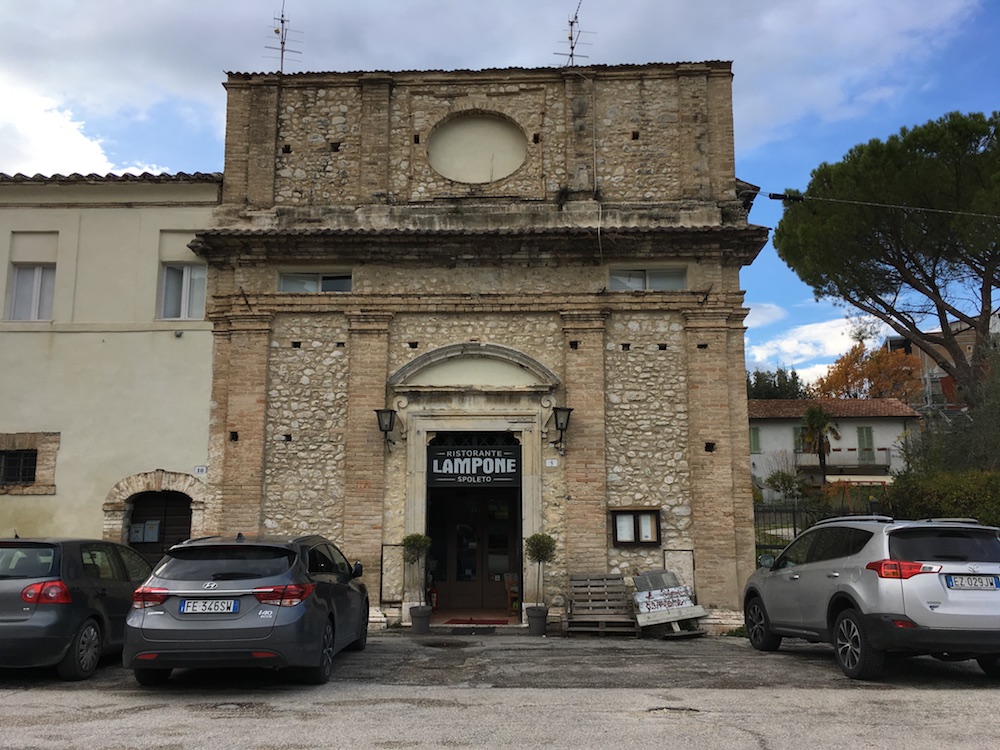 Plans to visit the estate and cellars of Bellafonte didn’t materialize due to our dependence on the train schedules, so we asked Maria Vittoria from the winery to recommend somewhere we might be able to enjoy one of their wines over lunch, when we made a stop in the beautiful and architecturally preserved gem of a hill town, Spoleto. A native of the town, she didn’t hesitate to point us to Lampone, which turned out to be just outside the walls, on the other side of town from the train station. The timing was perfect: we walked up the hill to visit the cathedral and view the old aqueduct that leads to the castle, then down through the warren of crooked old streets, out a gate and over to the Restaurant that sits on the old road to Rome, the via Flaminia. Lampone did not disappoint, once we secured our 2014 Beelafonte Arnetó we sat down to a lovely lunch of regional specialties brought up with a few dashes of alto cucina. Apple secured victory once more by ordering a dish of the town’s famous pasta, Strengozzi alla “Spoletina” with sauce of tomatoes, cream, parsley and pecorino. The sting of my defeat, however, was soothed by the equally tradional crescionda Spoletina, a chocolate cake that the restaurant re-interpreted into a mousse that, when combined with our post-prandial coffees, gave us just enough energy to climb bakc up the hill and across the old town to make our train to Rome.
Plans to visit the estate and cellars of Bellafonte didn’t materialize due to our dependence on the train schedules, so we asked Maria Vittoria from the winery to recommend somewhere we might be able to enjoy one of their wines over lunch, when we made a stop in the beautiful and architecturally preserved gem of a hill town, Spoleto. A native of the town, she didn’t hesitate to point us to Lampone, which turned out to be just outside the walls, on the other side of town from the train station. The timing was perfect: we walked up the hill to visit the cathedral and view the old aqueduct that leads to the castle, then down through the warren of crooked old streets, out a gate and over to the Restaurant that sits on the old road to Rome, the via Flaminia. Lampone did not disappoint, once we secured our 2014 Beelafonte Arnetó we sat down to a lovely lunch of regional specialties brought up with a few dashes of alto cucina. Apple secured victory once more by ordering a dish of the town’s famous pasta, Strengozzi alla “Spoletina” with sauce of tomatoes, cream, parsley and pecorino. The sting of my defeat, however, was soothed by the equally tradional crescionda Spoletina, a chocolate cake that the restaurant re-interpreted into a mousse that, when combined with our post-prandial coffees, gave us just enough energy to climb bakc up the hill and across the old town to make our train to Rome.

The author between meals in Perugia. Photo: Apple Newton-Smith.

